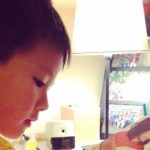Author and past Wall honoree writes on: Maxine Hong Kingston, Pat Suzuki, Puna Flanders and Tomi KobaraBy Jeanne Wakatsuki Houston
Editor’s Note: A noted author of the classic Farewell to Manazar and the long-awaited The Legend of Firehorse Woman, Jeanne Wakatsuki Houston has herself been featured in past Women’s History Month editions, and was voted early on to the Village’s APA Women’s Wall of Fame. This year, we thought we’d ask Jeanne what APA women had in turn impressed and inspired her in her work and life.
MAXINE HONG KINGSTON When Maxine Hong Kingston’s WOMAN WARRIOR was reviewed in the New York Times, John Leonard wrote, “This book will burn the fat right out of your brain.” Since meeting her in 1976 at the Waioli Tea Room in Honolulu, she has been a close friend who has been “burning the fat right out of my brain” as a writing mentor. “Get wild! Let go! Show your dark side! Explode!” she’d say in a soft, breezy voice. Diminutive in stature, she is a giant — in literature, and in the peace movement. I admire her deep commitment to humanity, her anti-war stances, her choice to pursue both causes through the path of spirituality. Yet, she went to jail in Washington, D.C for protesting the invasion of Iraq. She walks the talk. As the first Asian-American writer to be featured on the cover of the NY Times Book Review, she broke ground for A/A writers to follow. She is an impressive human being and, as my kids would say, “awesome”.
PAT SUZUKI Patti, a pop singer during the fifties and sixties, was a college friend at San Jose State College in 1952. She was a “bohemian” art student, who wore berets and jeans to class. (In those days, women didn’t wear jeans except to clean or pick strawberries, as I did.) This is how we met. One day while walking across the quad, she approached me. I had seen her around but never had spoken with her. “Hey, are you Japanese?’ she asked. “Yes, I answered. “Would you come home with me some day and meet my dad? I want to show him I have a Japanese friend here at school.” “In Livingston, by Fresno. Can you come this weekend? Meet me here at the quad.” Again without hesitation: “Sure.” “Wow! thanks so much!” She began to saunter away. I yelled. “But what’s your name? Mine’s Jeanne!” “Oh, mine’s Pat Suzuki.” Patti was a jazz singer who sang at clubs while studying at college — an activity frowned upon by the teaching credentials committee, who gave her a hard time when she tried to acquire a credential to teach art in schools. But she was fearless and unflinching in her honor, and dropped from the program and went into full time music. When she starred in the Broadway musical “Flower Drum Song“, my husband and I flew from England to see her on opening night. She was a true non-conformist and impressed upon me that being “different” – even in one’s own ethnic community – was to be admired, not disparaged.
JUDITH PUNA FLANDERS
Puna Flanders is one-eighth Hawaiian. Yet, among the many Hawaiian women I know who claim a higher percentage of Polynesian blood, her spirit epitomizes most fully, to me, values and beliefs of a beautiful indigenous culture fading under the onslaught of outside forces. Generosity. Warmth. Love of family. Acceptance of others into the family fold — “ohana”. Respect and care of the “aina” (land). Reverence for all living creatures. Deep sensitivity to the world of the soul, to spirits. Puna’s mind is brilliant, as logical and incisive as a western philosophy scholar. Yet being in her presence transports me to a non-linear space – perhaps most aptly described by the poet RUMI as that threshold where the two worlds meet, that doorsill where we cross back and forth. A mentor for me in the spiritual sense, Puna’s being connects me to nature, to the bigger picture of the universe and its purpose. She is “aloha”, in the most encompassing meaning of the word. An impressive person in my life.
TOMI KOBARA Tomi is in her eighties. Yet to look at her, one would think she is twenty years younger. She exudes a vibrant, youthful energy which for many years she lavished on activities for the Japanese American community in Northern California. Privately, she painted. Her portraits, landscapes and still-lifes are extraordinary, snapped up by prestigious galleries in Carmel and Los Angeles. Her artistic sensibility is unique, a blend of “yin and yang”, “form and essence”, “East and West”. Wife, mother, grandmother, painter, home decorator ,community activist, she now lives in Hawaii, and last word is she is forming a committee to research and preserve the history of Kailua, Oahu. Purveyor of exquisite taste in all she does, Tomi is a living art form herself. I can imagine her as a noble lady in ancient Japan – or a Congresswoman from California – or a Buddhist nun in Tibet. She is a Being of many hues and talents with a gentle, kind spirit that sources her roaring creativity.
Other Readings of Interest
Jeanne Wakatsuki Houston is co-author with husband James D. Houston of the pioneering memoir, Farewell to Manzanar-among the earliest and most widely read accounts of the internment of Japanese Americans during World War II. Her most recent book and first novel, addressing similar historical themes in fiction, in The Legend of Fire Horse Woman from Kensington Publishing. |
||
|











